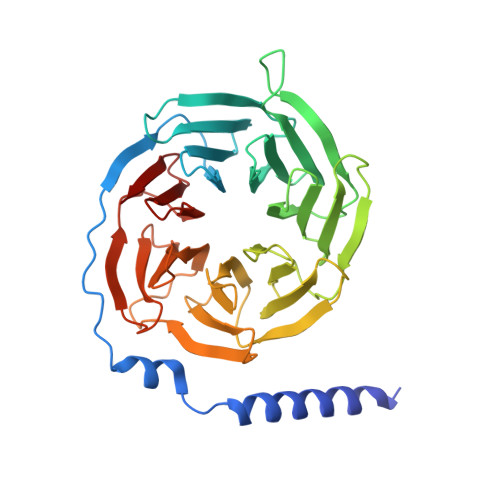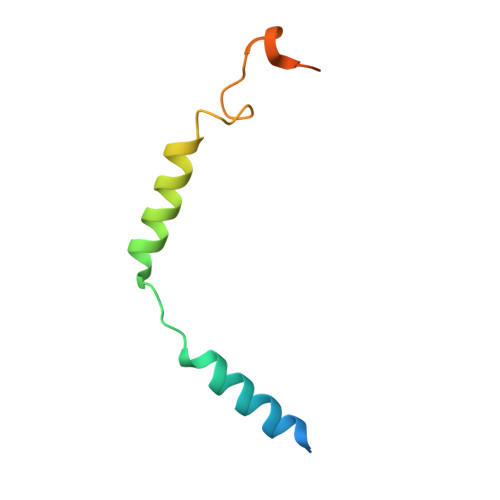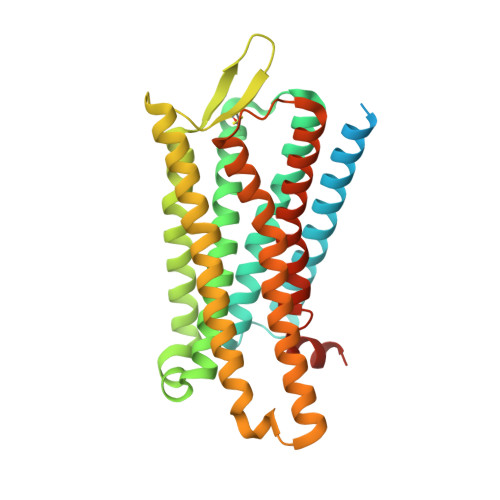Structure-based design of bitopic ligands for the μ-opioid receptor.
Faouzi, A., Wang, H., Zaidi, S.A., DiBerto, J.F., Che, T., Qu, Q., Robertson, M.J., Madasu, M.K., El Daibani, A., Varga, B.R., Zhang, T., Ruiz, C., Liu, S., Xu, J., Appourchaux, K., Slocum, S.T., Eans, S.O., Cameron, M.D., Al-Hasani, R., Pan, Y.X., Roth, B.L., McLaughlin, J.P., Skiniotis, G., Katritch, V., Kobilka, B.K., Majumdar, S.(2023) Nature 613: 767-774
- PubMed: 36450356
- DOI: https://doi.org/10.1038/s41586-022-05588-y
- Primary Citation of Related Structures:
7U2K, 7U2L - PubMed Abstract:
Mu-opioid receptor (µOR) agonists such as fentanyl have long been used for pain management, but are considered a major public health concern owing to their adverse side effects, including lethal overdose 1 . Here, in an effort to design safer therapeutic agents, we report an approach targeting a conserved sodium ion-binding site 2 found in µOR 3 and many other class A G-protein-coupled receptors with bitopic fentanyl derivatives that are functionalized via a linker with a positively charged guanidino group. Cryo-electron microscopy structures of the most potent bitopic ligands in complex with µOR highlight the key interactions between the guanidine of the ligands and the key Asp 2.50 residue in the Na + site. Two bitopics (C5 and C6 guano) maintain nanomolar potency and high efficacy at G i subtypes and show strongly reduced arrestin recruitment-one (C6 guano) also shows the lowest G z efficacy among the panel of µOR agonists, including partial and biased morphinan and fentanyl analogues. In mice, C6 guano displayed µOR-dependent antinociception with attenuated adverse effects, supporting the µOR sodium ion-binding site as a potential target for the design of safer analgesics. In general, our study suggests that bitopic ligands that engage the sodium ion-binding pocket in class A G-protein-coupled receptors can be designed to control their efficacy and functional selectivity profiles for G i , G o and G z subtypes and arrestins, thus modulating their in vivo pharmacology.
- Center for Clinical Pharmacology, University of Health Sciences and Pharmacy and Washington University School of Medicine, St Louis, MO, USA.
Organizational Affiliation:





















